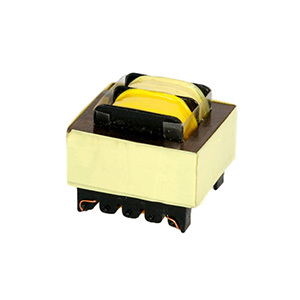NEWS
Understanding Common-Mode Inductors: Key Benefits for Your Filter Designs
Release time:
Nov 10,2024
Understanding Common-Mode Inductors: Key Benefits for Your Filter Designs
Table of Contents
- 1. Introduction to Common-Mode Inductors
- 2. What Are Common-Mode Inductors?
- 3. How Common-Mode Inductors Work
- 4. Benefits of Using Common-Mode Inductors in Filters
- 5. Applications of Common-Mode Inductors
- 6. Design Considerations for Common-Mode Inductors
- 7. Troubleshooting Common-Mode Inductors
- 8. Future Trends in Common-Mode Inductor Technology
- 9. Frequently Asked Questions
- 10. Conclusion
1. Introduction to Common-Mode Inductors
Common-mode inductors play a crucial role in modern electronic filter designs. As technology evolves, ensuring signal integrity and reducing electromagnetic interference (EMI) becomes increasingly important. This article will explore the fundamental aspects of common-mode inductors, their benefits, applications, and design considerations, offering an in-depth understanding of how these components can enhance your filter designs.
2. What Are Common-Mode Inductors?
Common-mode inductors are passive electronic components designed to suppress common-mode noise while allowing differential signals to pass. They consist of two or more coils wound around a magnetic core, creating a shared magnetic field. This design allows them to respond to noise that appears equally on both conductors while ignoring signals that differ between the two, making them ideal for applications requiring noise filtration.
Key Characteristics of Common-Mode Inductors
The primary characteristics of common-mode inductors include:
- **Inductance Value**: Determines the level of noise suppression and affects frequency response.
- **DC Resistance (DCR)**: Influences power loss and efficiency within the circuit.
- **Rated Current**: Indicates the maximum current the inductor can handle without saturation.
- **Self-Resonant Frequency (SRF)**: The frequency at which the inductor's inductive reactance equals its capacitive reactance, impacting its effectiveness in filter designs.
3. How Common-Mode Inductors Work
Common-mode inductors operate based on the principle of electromagnetic induction. When a common-mode noise signal is present, it induces a current in both coils of the inductor. The shared magnetic field created by the coils produces a counteracting effect, which attenuates the noise signal. Meanwhile, the differential signals that are out of phase do not induce equal currents in both coils, allowing them to pass through unimpeded.
Operational Mechanism
- **Induced Voltage**: The noise signal generates voltages across the coils, which results in a cancellation effect.
- **Magnetic Coupling**: The coils are magnetically coupled, enhancing the inductance and boosting noise rejection capabilities.
- **Noise Filtering**: The design effectively filters out unwanted noise while maintaining the integrity of the desired signals.
4. Benefits of Using Common-Mode Inductors in Filters
Integrating common-mode inductors into filter designs provides several notable advantages:
Enhanced Noise Suppression
The primary benefit of common-mode inductors is their ability to effectively suppress unwanted noise, ensuring clean signal transmission. This is particularly beneficial in environments with high EMI, such as industrial settings or near radio frequency sources.
Improved Signal Integrity
By reducing common-mode noise, these inductors help maintain the integrity of differential signals, which is essential for high-speed data transmission and clear audio signals.
Cost-Effective Solution
Common-mode inductors can be a cost-effective solution for noise reduction, as they often require fewer additional filtering components compared to alternative methods.
Versatility in Applications
These inductors can be employed in various applications, including telecommunications, automotive electronics, power supplies, and audio equipment. Their flexibility makes them a valuable asset in numerous design scenarios.
Compact Design
With advancements in technology, common-mode inductors are available in compact sizes, allowing them to be integrated into smaller devices without compromising performance.
5. Applications of Common-Mode Inductors
Common-mode inductors find use across a wide range of industries:
Telecommunications
In telecommunications, common-mode inductors are employed to reduce noise in data transmission lines, ensuring reliable communication in networking equipment.
Automotive Electronics
Automotive applications utilize these inductors to suppress noise generated by electrical components, enhancing the performance of sensors and communication systems in modern vehicles.
Power Supply Circuits
In power supply designs, common-mode inductors help mitigate noise from switching power supplies, improving efficiency and stability.
Audio Equipment
For audio applications, these inductors are critical in ensuring high-quality sound reproduction by filtering out unwanted noise, resulting in clearer audio signals.
Medical Devices
In medical equipment, common-mode inductors are essential for maintaining signal integrity and reliability, particularly in sensitive diagnostic devices.
6. Design Considerations for Common-Mode Inductors
When designing circuits that utilize common-mode inductors, several factors must be considered to ensure optimal performance:
Inductor Selection
Choosing the right inductor involves assessing factors such as inductance value, current ratings, and physical dimensions to match the specific needs of the application.
Placement and Layout
The placement of common-mode inductors within a circuit board can significantly affect their performance. Proper layout techniques, including minimizing loop areas and ensuring adequate grounding, are crucial for enhancing noise suppression capabilities.
Thermal Management
Common-mode inductors can generate heat during operation, making thermal management an important consideration. Ensuring proper airflow and heat dissipation can prolong the lifespan and reliability of the inductor.
Testing and Validation
Conducting thorough testing and validation of the inductor's performance in the intended application is essential to ensure it meets the desired specifications and effectively reduces noise.
7. Troubleshooting Common-Mode Inductors
While common-mode inductors are reliable components, issues may arise during their integration into circuits. Here are some common problems and their solutions:
Inadequate Noise Suppression
If you experience insufficient noise suppression, it may be due to incorrect inductor selection or placement. Ensure that the inductor’s specifications match the application requirements, and check that it is positioned to minimize loop areas.
Signal Distortion
Signal distortion can occur if the inductor saturates or if there are inadequate differential return paths. Consider using inductors with higher current ratings or redesigning the circuit layout to improve signal paths.
Overheating
Overheating can lead to reduced performance and component failure. Ensure that the circuit is designed for proper thermal management, and verify that the inductor’s ratings are not exceeded.
8. Future Trends in Common-Mode Inductor Technology
As technology continues to advance, we can expect several trends in common-mode inductor technology:
Miniaturization
The demand for smaller electronic devices will drive the development of even more compact common-mode inductors, maintaining performance while reducing size.
Advanced Materials
Innovations in magnetic materials will enhance inductance values and thermal performance, leading to more efficient and capable inductors.
Smart Inductors
The integration of smart technology into inductors could allow for real-time monitoring and adaptive filtering capabilities, enhancing performance in dynamic environments.
Increased Customization
As industries become more specialized, the need for customized common-mode inductors tailored to specific applications will rise, promoting innovation and improved functionality.
9. Frequently Asked Questions
What is the primary function of common-mode inductors?
Common-mode inductors primarily serve to filter out common-mode noise in electronic circuits while allowing differential signals to pass without interference.
How do I select the right common-mode inductor for my application?
When selecting a common-mode inductor, consider factors such as inductance value, rated current, DC resistance, and the specific requirements of your application.
Can common-mode inductors improve signal integrity?
Yes, by reducing common-mode noise, these inductors enhance signal integrity, which is crucial for high-speed data transmission and audio applications.
Are common-mode inductors used in power supply designs?
Absolutely. Common-mode inductors play a key role in power supply designs by mitigating noise generated from switching power supplies, promoting efficiency and stability.
What are common problems associated with common-mode inductors?
Common issues include inadequate noise suppression, signal distortion, and overheating, which can often be resolved through proper selection, placement, and thermal management.
10. Conclusion
Common-mode inductors are invaluable components in modern electronic filter designs, offering numerous benefits such as enhanced noise suppression, improved signal integrity, and versatility across various applications. By understanding their operational mechanisms, advantages, and design considerations, engineers can effectively integrate these inductors into their circuits. As technology progresses, we anticipate exciting developments in common-mode inductor technology, paving the way for even more innovative solutions in the electronics industry. Embracing these advancements will empower us to create superior filter designs that meet the demands of an increasingly complex and connected world.


















